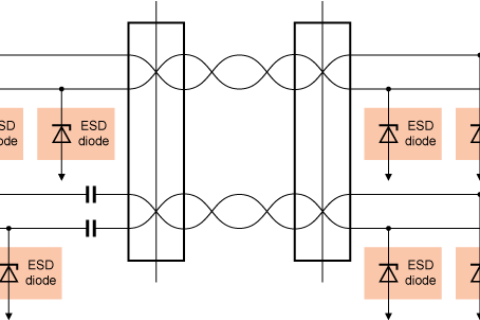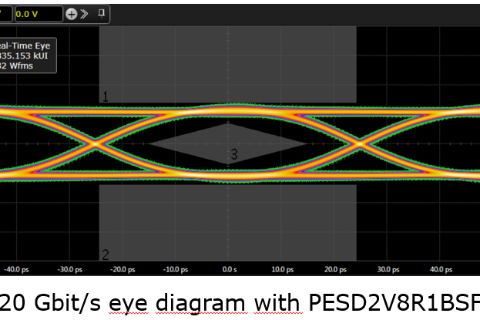Products - ESD protection
Design considerations
- 20 Gbps on one differential pair (super-speed)
- Low insertion loss (signal attenuation) and low return loss (signal reflection) required along with low clamping to protect sensitive super-speed data lines
- Need to protect AC-coupling for the receiver inputs (Rx) which are mandatory on USB4
- Different protocols have different operating voltages
ESD Design Engineer’s Guide
Download Nexperia’s ESD Design Engineer’s Guide and get a better understanding of ESD protection topologies and failure symptoms as well as testing and simulation for modern interfaces
Choosing ESD protection devices for USB4
The new USB4TM specification introduced some changes, which have consequences for the selection of ESD protection components. Obviously, ESD protection needs to add low insertion loss (signal attenuation) and low return loss (signal reflection) to the system while offering low clamping to protect sensitive high-speed data lines. However, comparing the USB4 and USB 3.2 specifications, we came across a point which might be easily overlooked – operation voltage.


